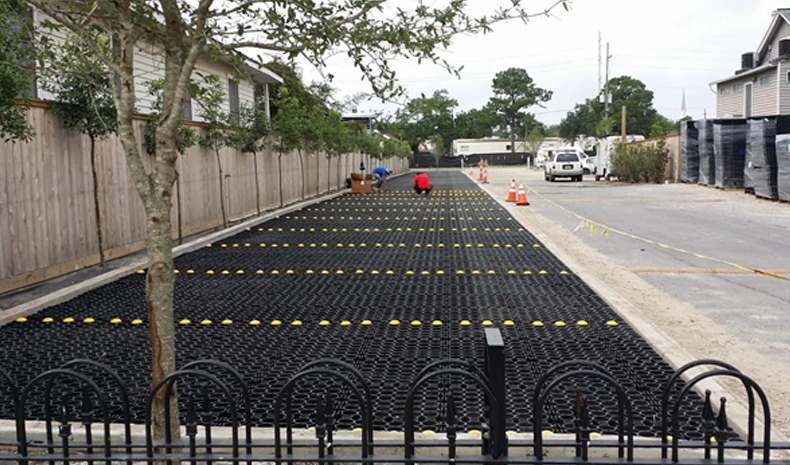Imagine driving into a parking lot that not only provides a safe and convenient space for your car, but also contributes to the wellbeing of the environment. Permeable pavement, a revolutionary solution for parking lots, allows rainwater to seep through its surface, reducing stormwater runoff and preventing pollution of nearby water sources. Not only does this innovative technology help in combating flooding and erosion, but it also improves water quality and replenishes local aquifers. In this article, we will explore the numerous benefits of permeable pavement for parking lots, highlighting its effectiveness in sustainable urban development and the importance of making this environmentally friendly choice.
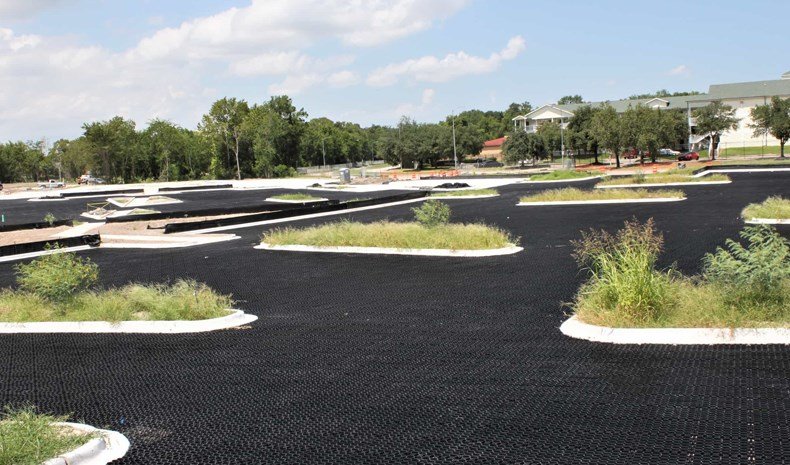
What is Permeable Pavement?
Permeable pavement is a type of paving material that allows water to drain through it, rather than running off the surface. It is designed to reduce stormwater runoff and help replenish groundwater supplies. This innovative pavement solution is becoming increasingly popular in parking lots due to its numerous environmental, economic, functional, safety, accessibility, aesthetical, longevity, durability, and design benefits.
The Need for Permeable Pavement in Parking Lots
Traditional parking lots with impermeable surfaces, such as asphalt or concrete, contribute to stormwater runoff, which can overwhelm municipal stormwater systems, leading to water pollution and flooding. Permeable pavement offers a sustainable alternative by allowing rainwater to filter through the surface and into the ground, reducing the strain on stormwater infrastructure. By implementing permeable pavement in parking lots, we can address these environmental concerns while experiencing a range of other benefits.
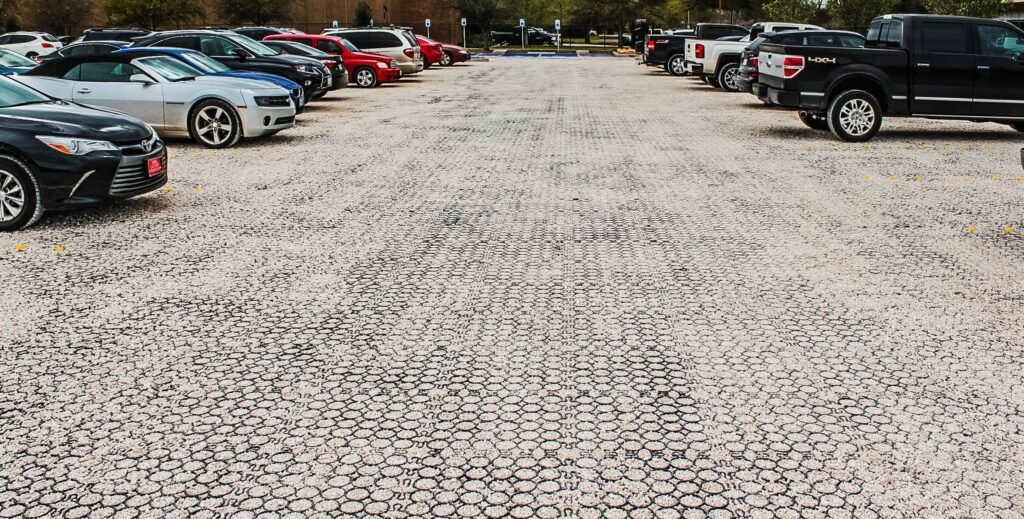
This image is property of www.truegridpaver.com.
Environmental Benefits
Reduces Stormwater Runoff
One of the key environmental benefits of permeable pavement is its ability to reduce stormwater runoff. Unlike traditional pavement, which creates a large volume of runoff, permeable pavement allows rainwater to percolate through the surface and into the ground. This natural infiltration process helps to recharge groundwater supplies and reduces the risk of flooding and erosion caused by excessive runoff.
Promotes Groundwater Recharge
Permeable pavement promotes groundwater recharge by allowing rainwater to replenish underground aquifers. As the water filters through the pavement surface, it undergoes natural filtration, removing pollutants and recharging the groundwater supply. This process is vital for maintaining a healthy water cycle and ensuring the availability of clean water for both human and ecological needs.
Improves Water Quality
Conventional parking lot surfaces contribute to water pollution by allowing contaminants, such as oil, chemicals, and sediment, to be washed into storm drains and ultimately into rivers, lakes, and oceans. Permeable pavement acts as a natural filter, capturing and retaining these pollutants within its layers, preventing them from entering water bodies. This helps to improve water quality and protect aquatic ecosystems.
Reduces Heat Island Effect
Heat islands, areas that are significantly hotter than their surrounding rural areas, are often caused by the abundance of impermeable surfaces like asphalt and concrete found in urban areas. Permeable pavement helps to mitigate the heat island effect by allowing rainwater to cool down the pavement surface through evaporation and reducing the amount of heat absorbed by the pavement. This leads to a more comfortable and sustainable urban environment.
Economic Benefits
Lower Construction Costs
Implementing permeable pavement in parking lots can often lead to lower construction costs compared to traditional pavement alternatives. Since permeable pavement doesn’t require extensive grading or the installation of costly drainage systems, construction time and expenses can be significantly reduced. This makes permeable pavement an attractive option for developers and contractors looking for cost-effective solutions.
Reduces Long-Term Maintenance Costs
Permeable pavement offers long-term cost savings through reduced maintenance requirements. Unlike traditional pavement surfaces that may crack or deteriorate over time, permeable pavement is designed to be more durable, requiring fewer repairs and replacements. Additionally, the natural filtration process within the pavement layers helps to prevent clogging and the buildup of debris, reducing the need for regular maintenance.
Enhances Property Value
Green infrastructure solutions like permeable pavement are increasingly valued by property owners and investors. Incorporating permeable pavement in parking lots can enhance the overall aesthetic appeal of the property while demonstrating a commitment to sustainability and the environment. Properties featuring permeable pavement may attract environmentally conscious tenants or customers, therefore increasing property value and marketability.

Functional Benefits
Improves Drainage
Permeable pavement significantly improves drainage capabilities compared to traditional pavement. It allows rainwater to be absorbed into the ground, preventing pooling and minimizing the risk of standing water. This efficient drainage system reduces the inconvenience of driving through large puddles and helps to keep parking lots safe, accessible, and functional even during heavy rain events.
Reduces the Need for Traditional Drainage Systems
Implementing permeable pavement eliminates or reduces the need for traditional drainage systems typically required in parking lots. By allowing water to infiltrate the ground naturally, the reliance on costly stormwater infrastructure, such as pipes and catch basins, is significantly reduced. This simplifies the construction process and provides a more sustainable approach to managing stormwater.
Prevents Puddling and Ice Formation
Permeable pavement prevents the formation of puddles, which can be hazardous and inconvenient for pedestrians and drivers alike. The ability of water to infiltrate through the pavement surface eliminates the accumulation of standing water, reducing the risk of slipping and improving overall safety. Furthermore, by minimizing standing water, permeable pavement helps to prevent the formation of ice during cold weather, mitigating the risk of ice-related accidents.
Offers Efficient Snow Removal
Snow removal is an essential task in colder regions, and traditional pavement surfaces often pose challenges due to ice formation and the need for de-icing chemicals. Permeable pavement offers efficient snow removal due to its ability to allow water to drain through the surface. This prevents the formation of ice and makes plowing or shoveling snow easier and more effective, ensuring safe and accessible parking lots even in snowy conditions.
Safety and Accessibility Benefits
Enhances Traction
Permeable pavement provides enhanced traction, improving safety for vehicles and pedestrians. The infiltration of rainwater through the pavement surface significantly reduces the risk of hydroplaning by preventing water from pooling on the surface. This promotes better grip and traction, reducing the likelihood of accidents and enhancing overall driving and walking safety.
Reduces Glare
Traditional parking lot surfaces, particularly when wet, can create glare that impairs visibility and can lead to accidents or discomfort. Permeable pavement helps to reduce glare by allowing rainwater to absorb into the ground rather than creating reflective surfaces. This improves visibility for drivers and pedestrians, enhancing safety and reducing the potential for accidents caused by impaired vision.
Improves Night Visibility
Parking lots with permeable pavement offer better night visibility compared to traditional surfaces. The ability of rainwater to drain through the pavement prevents the accumulation of standing water, which can reflect and disperse light, causing reduced visibility. With fewer areas of standing water, especially during nighttime rains, it becomes easier for drivers and pedestrians to navigate parking lots safely.
Mitigates the Risk of Ice-Related Accidents
Icy parking lots pose a significant safety risk for both vehicles and pedestrians. Permeable pavement helps to mitigate this risk by preventing the formation of ice due to its efficient drainage capabilities. By allowing water to infiltrate into the ground, the surface remains drier, reducing the risk of slippery conditions and the likelihood of accidents caused by ice-related hazards.
Suitable for ADA Compliance
Permeable pavement is compatible with the requirements of the Americans with Disabilities Act (ADA). The paving material can be installed in a way that provides a smooth, continuous, and accessible surface, allowing individuals with disabilities to navigate parking lots safely and easily. This ensures compliance with accessibility standards while incorporating sustainable solutions within the built environment.
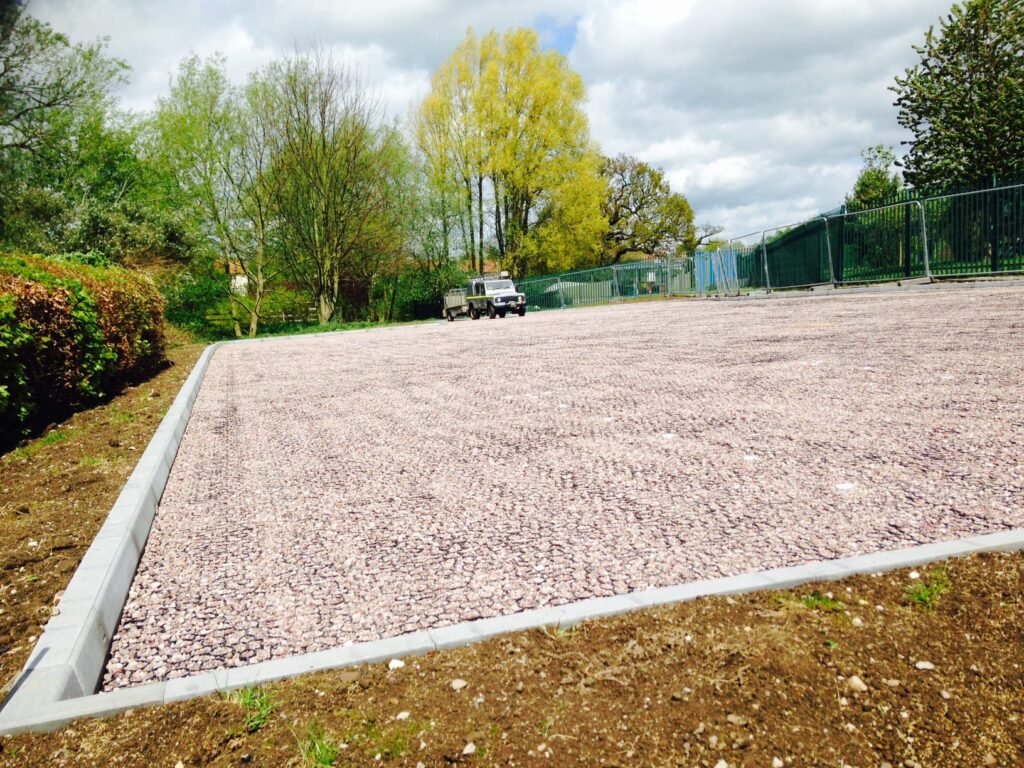
This image is property of www.gclproducts.co.uk.
Aesthetical Benefits
Provides a Visually Pleasing Appearance
Permeable pavement offers an aesthetically pleasing alternative to traditional parking lot surfaces. The variety of paving materials available in different colors, textures, and patterns allows for creative and visually appealing designs. Permeable pavement can enhance the overall appearance of parking lots, creating a welcoming and attractive environment for visitors and tenants alike.
Allows for Decorative and Landscaping Options
The permeable nature of the pavement allows for the integration of landscaping elements into parking lots. The areas between the pavement can be filled with vegetation, such as grass or native plants, creating green spaces and adding a touch of nature to otherwise paved areas. These landscaping options can improve the overall aesthetics, contribute to biodiversity, and provide additional environmental benefits.
Longevity and Durability
Designed to Withstand Heavy Loads
Permeable pavement is specifically designed to withstand heavy vehicular loads. The interlocking pavers or porous asphalt materials used in permeable pavement systems are engineered to provide strength and durability, making them suitable for use in parking lots. This ensures that the pavement can withstand the demands of frequent traffic without compromising its structural integrity.
Resistant to Cracking and Erosion
Compared to traditional pavement, which can be prone to cracking and erosion over time, permeable pavement is more resistant to these issues. The construction of permeable pavement systems allows for some movement and flexibility, reducing the likelihood of cracking under the stresses of freeze-thaw cycles or heavy loads. Additionally, the natural filtration process within the pavement helps to prevent erosion and maintain its stability.
Longer Lifespan than Traditional Pavement
Permeable pavement has been found to have a longer lifespan than traditional pavement options, such as asphalt or concrete. With proper maintenance and regular monitoring, permeable pavement can last for several decades, providing a durable and sustainable solution for parking lots. This extended lifespan helps to minimize the need for frequent repairs or replacements, resulting in cost savings over time.
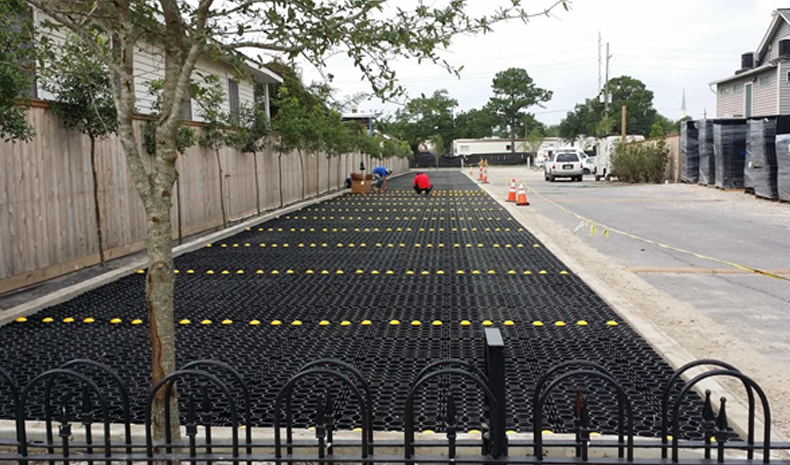
Versatility in Design
Flexible Design Options
Permeable pavement offers flexibility in design, allowing for the creation of unique patterns, shapes, and layouts. Whether it’s a simple grid pattern or intricate designs, permeable pavement can be customized to suit the specific aesthetic and functional requirements of each parking lot. The ability to have design flexibility enables property owners and designers to create visually appealing and distinctive parking lot surfaces.
Ability to Accommodate Irregular Shapes
Unlike traditional pavement, which often requires uniform rectangular shapes, permeable pavement can accommodate irregular shapes and contours. This feature allows for the integration of parking lots into existing landscapes, working around existing vegetation, trees, or any other natural elements. By adapting to the existing environment, permeable pavement preserves the natural beauty of the area and reduces the need for extensive site preparation.
Can be Integrated with Traditional Pavement
Permeable pavement can be seamlessly integrated with traditional pavement surfaces, providing a well-balanced approach in design and functionality. By combining impermeable and permeable pavements, property owners can create zones of permeability where stormwater runoff can be managed effectively, while still maintaining traditional paved areas for driving lanes or specific purposes. This versatility in design provides the best of both worlds in terms of performance and aesthetics.
Implementation Process
Site Assessment and Planning
The implementation process for permeable pavement in parking lots begins with a thorough site assessment and planning phase. This involves evaluating the current site conditions, such as soil composition, drainage patterns, and existing infrastructure. The site assessment helps determine the suitability of permeable pavement and allows for the creation of a design plan that meets the goals and requirements of the project.
Subgrade Preparation
Preparing the subgrade is a crucial step in the installation of permeable pavement. The existing soil may need to be excavated, graded, and compacted to create a stable base for the pavement system. This preparation ensures proper water infiltration and structural stability.
Installation of Permeable Pavement
Once the subgrade is prepared, the permeable pavement can be installed. The specific installation process varies depending on the chosen permeable pavement system, whether it is interlocking pavers, porous asphalt, or another type. The proper installation techniques are followed to ensure a durable and functional pavement surface that allows for water infiltration.
Maintenance and Monitoring
Regular maintenance and monitoring are essential for ensuring the longevity and effectiveness of permeable pavement in parking lots. Maintenance tasks may include sweeping or vacuuming to remove debris, inspecting for any clogging or damage, and occasionally power washing the surface to prevent the buildup of pollutants. Monitoring the performance of the pavement system over time helps identify any issues and allows for timely maintenance or repairs.
Conclusion
Permeable pavement offers a sustainable solution for parking lots, addressing environmental, economic, functional, safety, accessibility, aesthetical, longevity, durability, and design concerns. By implementing permeable pavement, we can reduce stormwater runoff, promote groundwater recharge, improve water quality, mitigate the heat island effect, enhance traction and visibility, and provide an attractive and long-lasting pavement surface. With its versatility in design and seamless integration with traditional pavement, permeable pavement is a practical choice for creating functional and environmentally friendly parking lots. By considering the benefits of permeable pavement, property owners, developers, and municipalities can contribute to a greener future while enjoying the many advantages this innovative technology offers.

